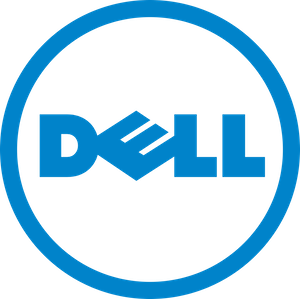
Dell announced today the release of their newest network operating system, OS10 (note the lack of an X). This is an OS that is slated to build on the success that Dell has had selling 3rd party solutions from vendors like Cumulus Networks and Big Switch. OS10’s base core will be built on an unmodified Debian distro that will have a “premium” feature set that includes layer 2 and layer 3 functionality. The aim to have a fully open-source base OS in the networking space is lofty indeed, but the bigger question to me is “what happens to Cumulus”?
Storm Clouds
As of right this moment, before the release of Dell OS10, the only way to buy Linux on a Dell switch is to purchase it with Cumulus. In the coming months, Dell will begin to phase in OS10 as an option in parallel with Cumulus. This is especially attractive to large environments that are running custom-built networking today. If your enterprise is running Quagga or sFlow or some other software that has been tweaked to meet your unique needs you don’t really need a ton of features wrapped in an OS with a CLI you will barely use.
So why introduce an OS that directly competes with your partners? Why upset that apple cart? It comes down to licenses. Every time someone buys a Dell data center switch, they have to pick an OS to run on it. You can’t just order naked hardware and install your own custom kernel and apps. You have to order some kind of software. When you look at the drop-down menu today you can choose from FTOS, Cumulus, or Big Switch. For the kinds of environments that are going to erase and reload anyway the choice is pointless. It boils down to the cheapest option. But what about those customers that choose Cumulus because it’s Linux?
Customers want Linux because they can customize it to their heart’s content. They need access to the switching hardware and other system components. So long as the interface is somewhat familiar they don’t really care what engine is driving it. But every time a customer orders a switch today with Cumulus as the OS option, Dell has to pay Cumulus for that software license. It costs Dell to ship Linux on a switch that isn’t made by Dell.
OS10 erases that fee. By ordering a base image that can only boot and address hardware, Dell puts a clean box in the hands of developers that are going to be hacking the system anyway. When the new feature sets are released later in the year that increase the functionality of OS10, you will likely see more customers beginning to experiment with running Linux development environments. You’ll also see Dell beginning to embrace a model that loads features on a switch as software modules instead of purpose-built appliances.
Silver Lining
Dell’s future is in Linux. Rebuilding their OS from the ground up to utilize Linux only makes sense given industry trends. Junos, EOS, and other OSes from upstarts like Pluribus and Big Switch are all based on Linux or BSD. Reinventing the wheel makes very little sense there. But utilizing the Switch Abstraction Interface (SAI) developed for OpenCompute gives them an edge to focus on northbound feature development while leaving the gory details of addressing hardware to the abstraction talking to something below it.
Dell isn’t going to cannibalize their Cumulus partnership immediately. There are still a large number of shops running Cumulus that a are going to want support from their vendor of choice in the coming months. Also, there are a large number of Dell customers that aren’t ready to disaggregate hardware from software radically. Those customers will require some monitoring, as they are likely to buy the cheapest option as opposed to the best fit and wind up with a switch that will boot and do little else to solve network problems.
In the long term, Cumulus will continue to be a fit for Dell as long as OS10 isn’t ported to the Campus LAN. Once that occurs, you will likely see a distancing of these two partners as Dell embraces their own Linux OS options and Cumulus moves on to focus on using whitebox hardware instead of bundling themselves with existing vendors. Once the support contracts expire on the Cumulus systems supported by Dell, I would expect to see a professional services offering to help those users of Cumulus-on-Dell migrate to a “truly open and unmodified kernel”.
Tom’s Take
Dell is making strides in opening up their networking with Linux and open source components. Juniper has been doing it forever, and HP recently jumped into the fray with OpenSwitch. Making yourself open doesn’t solve your problems or conjure customers out of thin air. But it does give you a story to tell about your goals and your direction. Dell needs to keep their Cumulus partnerships going forward until they can achieve feature parity with the OS that currently runs on their data center switches. After that happens and the migration plans are in place, expect to see a bit of jousting between the two partners about which approach is best. Time will tell who wins that argument.


You can measure the success of this venture by their care and feeding of the community around OS10. Forums, developer email lists and social media would be a good start. Next would be their moderation of contributions and a versioning system as things progress. Still.. Bold move.
Pingback: Technology 'net: End-to-end Disaggregation? - 'net work